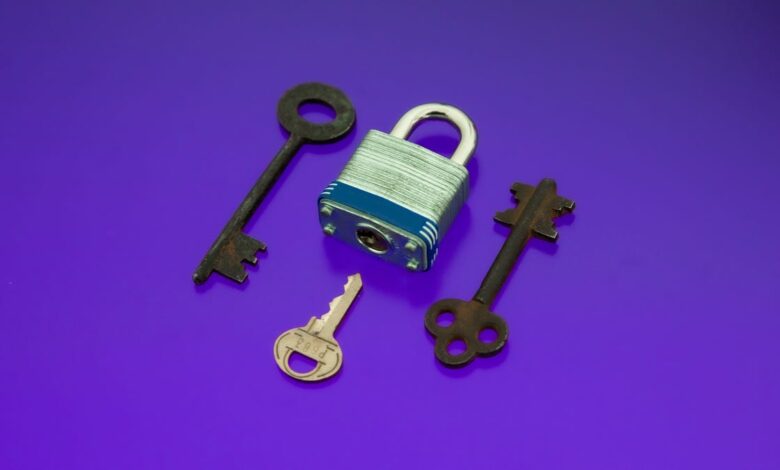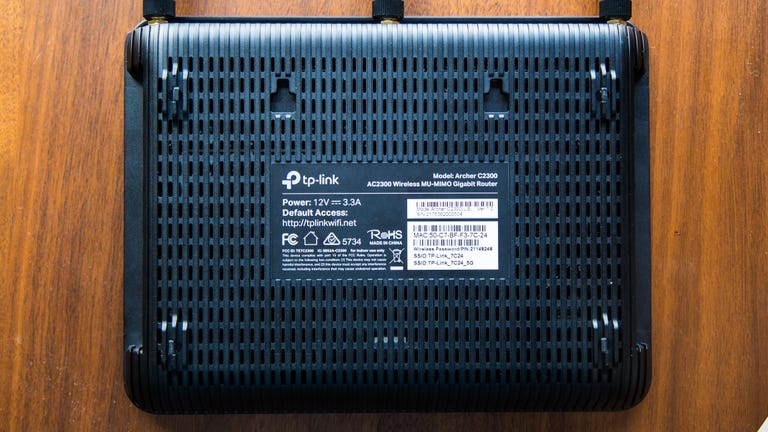Yes, your wifi can be hacked. Here’s how to secure your network




Wi-Fi is convenient, but that convenience comes at a price: security risks. If someone with malicious intent gains access to your network, they could potentially control your connected devices, install malicious software, and spy on sensitive data like credit card numbers and live camera feeds.
A secure home network helps reduce the risk of being hacked and having someone gain access to your sensitive information. It also keeps out unwanted or unauthorized users and devices that slow down your connection or take advantage of the internet service you pay for.

Creating and maintaining a secure home Wi-Fi network is fairly simple. Below are 10 tips to help you secure your network. Some are more effective than others at keeping hackers and profiteers at bay, but they’re all useful in their own way.
Keep in mind that nothing can guarantee absolute security against hacking attempts, but these tips will make it harder for others to compromise your network and data. (For more Wi-Fi tips, check out how to tell if your internet provider is throttling your wifi connection and our tips to speed up your wifi connection).
How to Secure Your Home WiFi Network
Here are the basics for protecting your home Wi-Fi network. Read on for more information on each below.
1Place your router in a central location.
2. Create a strong WiFi password and change it regularly.
3. Change the default login information for the router.
4Enable firewall and wifi encryption.
5. Create a guest network.
6Use a VPN.
7Make sure your router and devices are up to date.
8. Disable external router access.
9Check the connected devices.
10Upgrade to a WPA3 router.
Place your router in a central location
Strong network security starts with smart placement. If possible, place your router in the center of your home. Routers send wireless signals in all directions, so strategically placing your router in a central location will keep your connection confined to the boundaries of your home. As a bonus, it will also likely ensure that best connection quality.
For example, if you internet in an apartment Where neighbors are directly to your left and right, placing your router next to a shared wall can send a strong and tempting signal their way. Even if you don’t live in an apartment, a good router signals next door or across the street. Placing your router in a central location can reduce the distance these signals travel outside your home.
Create a strong WiFi password and change it regularly
This should speaks for itself, but I’m going to discuss it anyway to emphasize its importance. Creating a unique password for your Wi-Fi network is essential for maintaining a secure connection. Avoid easy-to-guess passwords or phrases, such as someone’s name, birthdays, phone numbers, or other general information. While simple Wi-Fi passwords make them easy to remember, they also make them easy for others to guess. (Here’s how to access your router settings to update your wifi password.)
Make sure to change your password approximately every six months, or whenever you suspect the security of your network has been compromised.

Change the default router login details
In addition to securing your Wi-Fi network with a password, you also want to prevent others from directly accessing your router’s settings.
To do this, go ahead and change the admin name and password of your router. You can log into your router settings by typing the IP address into the URL bar, but most routers and providers have an app that allows you to access the same settings and information.
Your router login information is separate from your Wi-Fi network name and password. If you’re not sure what the default is, you can find it on the bottom of your router. Or, if it’s changed from the default somewhere along the way, Here’s how to access your router settings to update the username and password.
Enable firewall and wifi encryption
Most routers have a firewall to prevent outside hacking and Wi-Fi encryption to prevent anyone from listening in on the data sent between your router and connected devices. Both are enabled by default, but you should check that they are enabled.
Now that you know how to log into your router settings, check to see if your firewall and Wi-Fi encryption are turned on. If for some reason they are turned off, turn them on. Your network security will thank you.
Create a guest wifi network
Before sharing access to your main home network, consider the following: create a separate guest network for visitors. I’m not suggesting that your guests try anything malicious with your main wifi connection, but their devices or anything they download while connected to your network could be infected with malware or viruses that attack your network without them knowing.
A guest network is also ideal for your IoT devices, such as Wi-Fi cameras, thermostats And smart speakers — devices that may not contain much sensitive information and may be easier to hack than smart devices such as a computer or phone.

Use a VPN
There are a few reasons to good VPNand network security is one of them. A virtual private network hides your IP address and Wi-Fi activity, including browsing data.
VPNs are most useful when connected to a public network, but they can still add a level of security and privacy to your home network. Some VPNs are better than others, but as with anything, you often get what you pay for. Free VPN services are available, but if you pay a little extra (just a few dollars a month), you can get a much better, safer service.
Keep your router and devices up to date
Software updates can be annoying, but they serve a purpose and often include security updates. When companies become aware of potential or exposed security vulnerabilities, they release updates and patches to minimize or eliminate the risk. You want to download those.
Keeping your router and connected devices up to date with the latest updates ensures the best protection against known malware and hacking attempts. Set your router to auto-update in the administrator settings, if possible, and check your router regularly to make sure it is up to date.
Disable external router access
Remote router access allows anyone who isn’t directly connected to your Wi-Fi network to access your router’s settings. Unless you need to access your router while you’re away from home (for example, to check or change the configuration of a child’s connected device), there’s no reason to enable remote access.
You can disable remote access through the router’s administrator settings. Unlike other security measures, disabled remote router access may not be the default.
Verify connected devices
Periodically check the devices connected to your network and make sure you know what they are. If there is anything suspicious on them, disconnect them and change your Wi-Fi password. After changing your password, you will have to reconnect all previously connected devices, but any users or devices that are not authorized to use your network will be kicked out.
Some devices, especially obscure IoT devices, may have strange default names of random numbers and letters that you don’t immediately recognize. If you see something like this when checking your connected devices, unplug them. Later, when you’re ready to robot vacuum cleaner from your phone you know that was it.
Upgrade to a WPA3 router
WPA3 is the latest security protocol for routers. All new routers should come with WPA3, so if you buy a new router, you don’t have to worry about anything. However, many people rent their routers directly from the provider, which may not have the most up-to-date equipment.
If your router was made before 2018, you may have a WPA2 device, which doesn’t have the same security protocols as newer WPA3 devices. A quick search for the model of your device should tell you when it came out and what specific features it has, like whether it has WPA2 or WPA3. If you have a router with WPA2, Call your provider and negotiate for a better, more recent router.
Network security is not a guarantee
Again, even with the latest and most effective methods to protect your home network, security will never be 100% certain. As long as there is an internet, hackers and cybercriminals will find ways to abuse it. But with the tips above, you can better protect your network from anyone who tries to use your connection or access your data.
For more information, see how to find free wifi anywhere in the world And the ideal location for your router.




